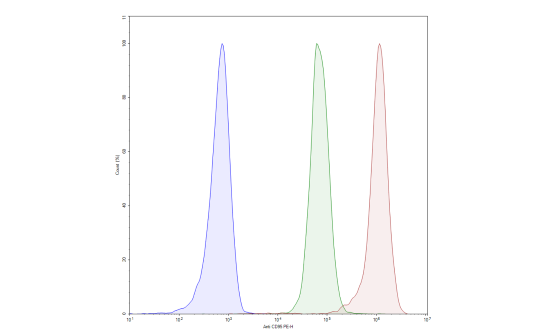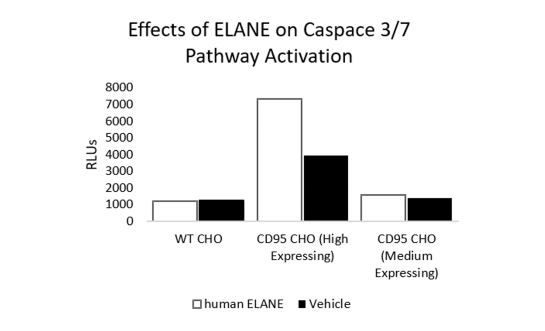CD95 CHO Cell Line (Medium or High Expression)
The CD95 CHO cell line is a recombinant clonal stable CHO cell line constitutively expressing full-length human CD95 receptor (accession number: NM_000043.3). Surface expression of human CD95 was confirmed by flow cytometry. Each clonal cell line was selected for different levels of CD95 expression (High or Medium) to mimic varying CD95 expression levels in cancer cells.
Purchase of this cell line is for research purposes only; commercial use requires a separate license. View the full terms and conditions.
Media Required for Cell Culture
| Name | Ordering Information |
| Thaw Medium 3 | BPS Bioscience #60186 |
| Growth Medium 3B | BPS Bioscience #79529 |
Materials Required for Cellular Assay
| Name | Ordering Information |
| F-12K Medium (Kaighn’s Modification of Ham’s F-12 Medium) | ThermoFisher #21127030 |
| ELANE (Elastase), Avi-His-Tag HiP™ Recombinant | BPS Bioscience #101141 |
| Recombinant Mouse Active Cathepsin C/DPPI Protein, CF | R&D Systems #2336-CY-010 |
| 96-well Flat Clear Bottom White Polystyrene TC-treated Microplates | Corning #3610 |
| Caspase-Glo® 3/7 Assay System | Promega #G8091 |
The cell line has been screened to confirm the absence of Mycoplasma species.
CD95 (Fas, APO-1, TNFRSF6) is a transmembrane cell-surface receptor with multifunctional regulatory effects in apoptosis and proliferation regulation. In some cellular contexts, interactions with the receptor ligand (CD95L) have been shown to activate JNK, ERK1, and NF-kB pathways to induce cell proliferation. In other cases, ligand interactions can trigger the release of a cytoplasmic death domain and induce apoptosis. This function is used by the immune system to kill cancer cells, and consequently, cancer cells can become resistant to CD95-induced apoptosis. The overexpression of CD95 in this cell line allows for the rapid testing of novel therapeutics that aim to increase CD95-mediated apoptosis in cancer cells.




